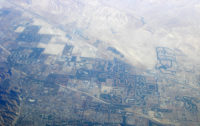The first, in Big Spring, Texas, came on line in 2012, and the second, in Wichita Falls, began operating this past July. "Both of these communities had extremely low reservoir levels and had very few other options or alternatives, other than direct potable re-use," he says. Unlike some high-profile projects planned during the 1990s and early 2000s that were derailed over public concerns about drinking recycled wastewater, the projects in Texas met with virtually no public opposition, says Daniel Nix, utility operations manager for Wichita Falls. He attributes the lack of opposition to an extensive public education program that enlisted medical doctors and academics to help explain that the treated water is safe for consumption.
"I'd say the general public, as a whole, understands that, as our water needs continue to grow [and as] the climate changes, we need to look to alternative sources of water. They understand that water reuse is part of the equation," says Ralph Eberts, an executive vice president at Black & Veatch and executive managing director of the firm's water Americas division.
Still, DPR has its detractors. MWH's Umble notes, "It's not a technology issue. We've got the technology nailed down." The real challenge, he says, is convincing the public that IPR, DPR and other forms of recycling are good ideas and safe solutions for water scarcity.
In California, the city of San Diego this year launched a large recycling program that will include an IPR component.
Additionally, the Orange County Groundwater Replenishment System is nearing completion of a $140-million expansion of its IPR system, to a capacity of 100 mgd from 70 mgd. Jason Dadakis, director of health and regulatory affairs for the Orange County Water District, says the district is studying the feasibility of expanding the project even further, if voters approve a $7.5-billion bond measure in November.
While the grants help, not everyone will be able to access the funding or have time to wait to see if they will receive the funding, notes Doug Owen, an executive vice president and chief technical officer at Arcadis.
So, utilities, already tight for cash for projects, are finding ways to get more creative about financing, firms say. One notable example is a $185-million project for the Woodland-Davis Clean Water Agency that will replace deteriorating groundwater supplies with surface water from the Sacramento River.
By partnering with a local reclamation district for a portion of the project that will draw water from a new, modern intake and fish screen on the Sacramento River's banks, the agency made itself eligible for federal funding through a Bureau of Reclamation grant program. The federal grant will cover 80% of the $44-million cost of the water intake and fish-screen project, which is being designed and built by MWH. The agency also is pursuing state-revolving-fund loans and other state funding.
In 2012, the San Diego County Water Authority entered a public-private partnership with Poseidon Water, a private firm that specializes in the development of desalination plants. The $1-billion project will produce 50 mgd of drinking water for the San Diego region, meeting about 7% of the county's need for water and producing about a third of all locally generated water by 2020. The project reached the 65% complete mark in late September and is expected to begin startup testing in fall 2015.
The project is part of the water authority's strategy to diversify its water portfolio, according to SDCWA. Some environmental advocates and even water utilities have dismissed desalination as too expensive, energy-intensive or, in some cases, harmful to aquatic life. But Arcadis' Owen says desalination needs to be "part of the portfolio." Arcadis designed the treatment plant and all its supporting facilities in Carlsbad. Owen says that even if 100% of water in a water-scarce area were recycled, "there's probably some need—strategically, in very water-short areas—to be able to implement desal."







